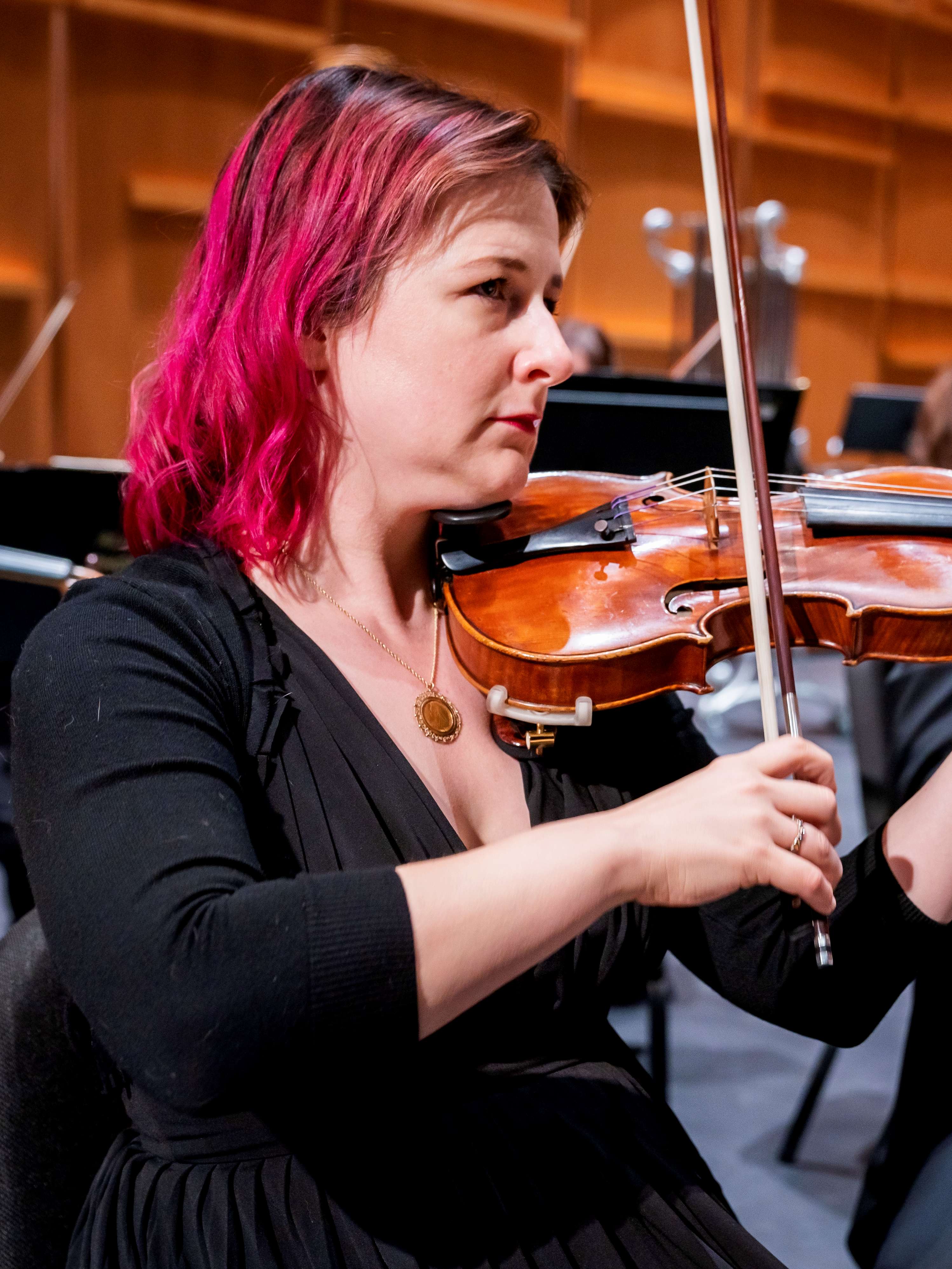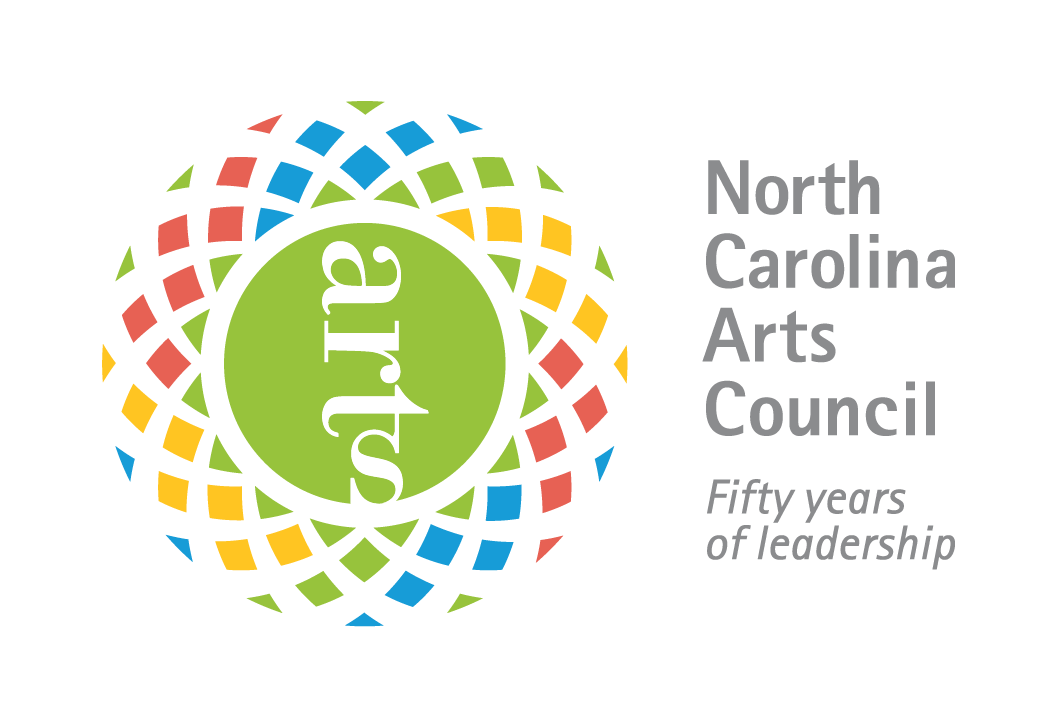Sound of Charlotte Blog
CLTSymphony X Beatties Ford Strong
November 17, 2020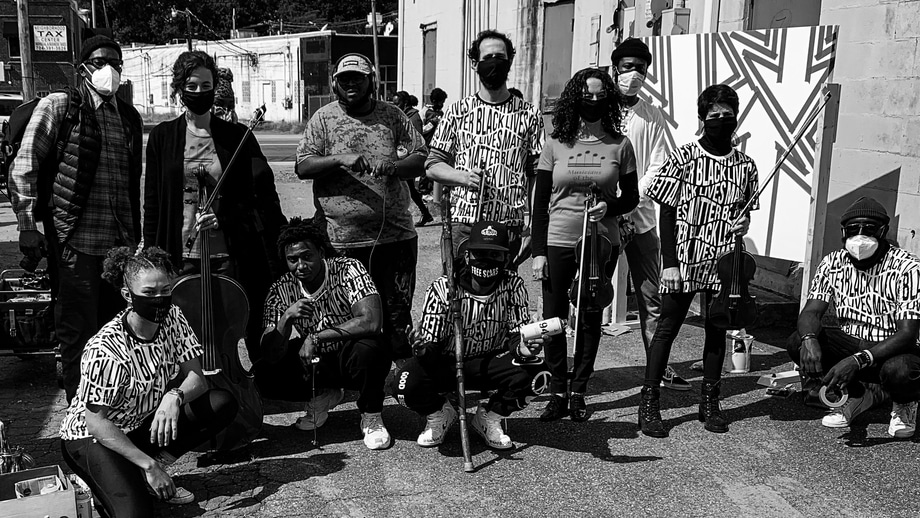
Below, we hear from CSO violinist Jenny Topilow, educator/artist/social activist Ricky Singh, and Charlotte-based artists on how the collaboration was conceived, their reactions, and what comes next.
"We have been referring to the project as CLTSymphony X Beatties Ford Strong" Ricky says. "The X is intentional, for we feel that a title that is purposefully not combined respects each entity as having its own identity, and also allows for either side of the equation to be replaced or modified as the project evolves to encourage further community engagement."
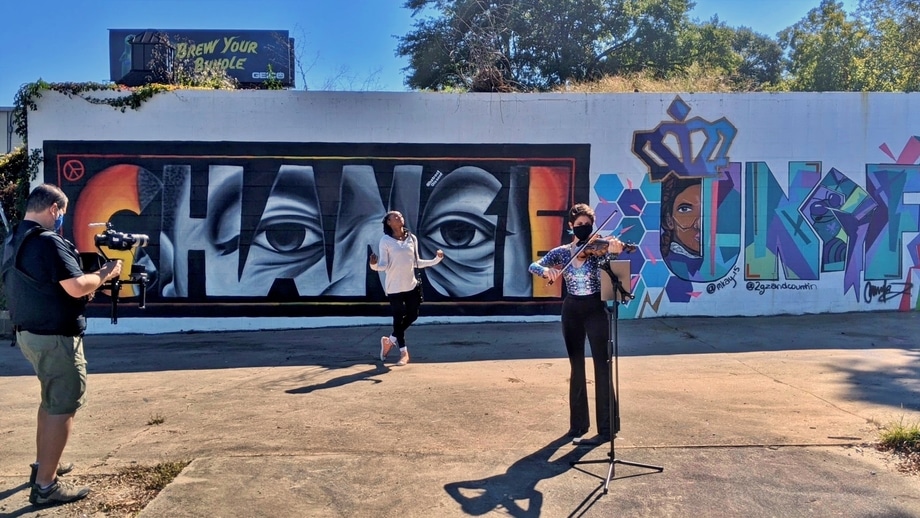
"I've always been enamored with public art," Jenny shares, "murals and such that everyone can enjoy by simply being a member of the community; beautiful pieces by talented artists that become interwoven throughout the landscape and make a place more vibrant and colorful."
In February of this year, a quartet of CSO musicians played Jessie Montgomery's Strum for a CSO Off the Rails concert at Snug Harbor. According to Jenny:
Excited about the idea, I reached out to a muralist friend of mine, who got me in touch with Ricky Singh. Ricky is an artist, educator, community leader/activist, and one of the founders of the Beatties Ford Strong/Historic West End Project, an initiative to beautify neglected areas of the city through public art paired with community ownership, brought about as a reaction to the June 19, 2020 massacre on Beatties Ford Road, where four people were killed and several others injured.
My introduction to Ricky was the catalyst for the project to really take flight through intentional collaboration. We communicate well and ended up making a good team; we are mutually intent on the vision and are invested in being proactive and bringing the best of what we know to the table. All that being said, there is no way for me to truly express how grateful I am to Ricky. He is a beacon within the Charlotte community, and I feel incredibly fortunate to have formed a partnership with him.
There are so many artistic circles throughout Charlotte that are too often separated by class and race. The purpose of this project is to bring some of those circles together; not for one to overshadow another, not for one to do the other a favor, not for one to mold to the other, but for local creatives to do what they love all within the same space. We are committed to having more multi-faceted performances throughout Charlotte, through the lens of all art being accessible to all people, and with the ultimate objective of limitless circles overlapping to create a more connected city.
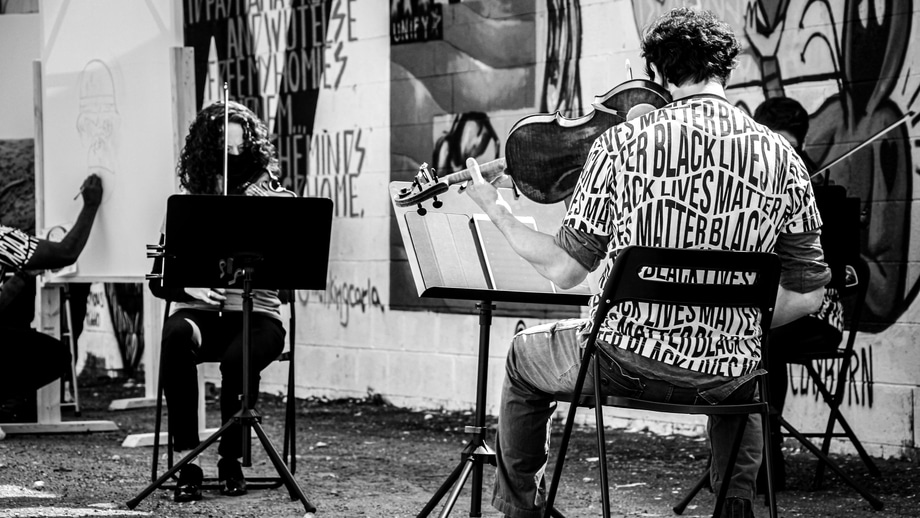
"My experience with the project was nothing like I ever experienced before," Artist Michael Grant shares. "This project captured both classical art and visual arts simultaneously. As an artist this project made me feel valuable and appreciated. It was such an honor to be a part of this moment of history and to collaborate with great artists as well."
Artist Makayla Binter also shares that "[the project] was just so pure and enjoyable because of the connection between artistic forms, and just the positive energy that creating makes. It was a great experience to live paint and also meet some very talented artists in music that I had never met before."
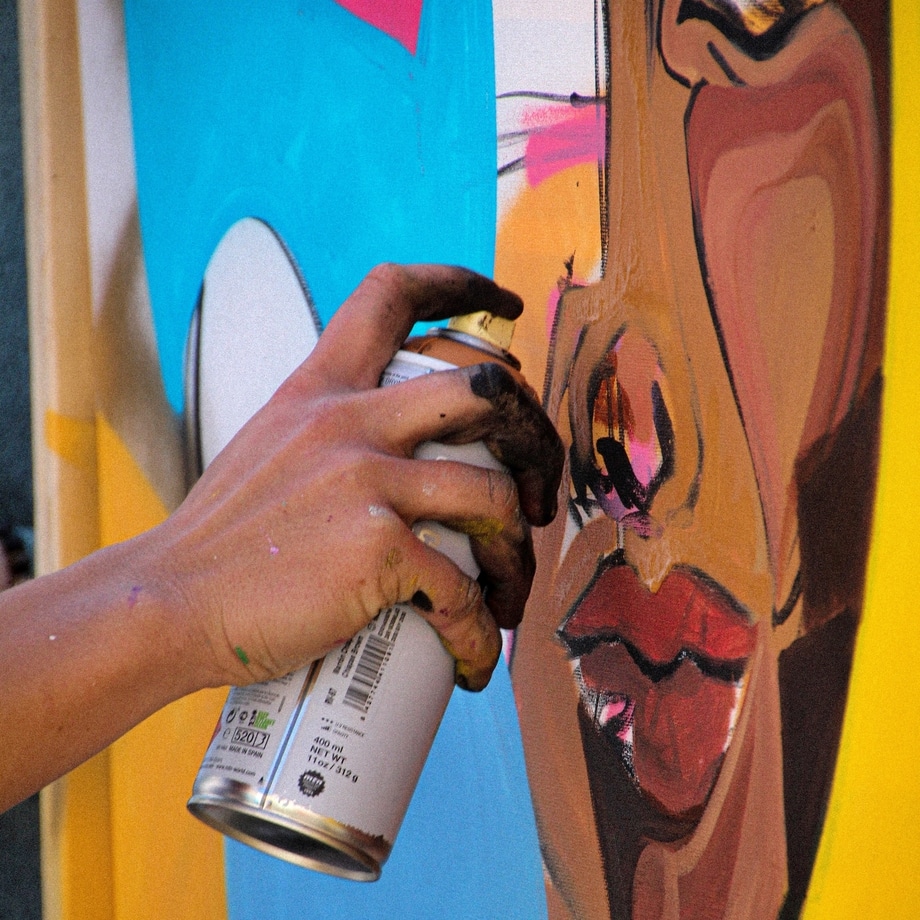
Ricky and Jenny plan to unveil the finished video at an event on a large screen, where they would also auction off the pieces of art created during filming. It is not finalized, but they are hoping to utilize a space like Camp Northend, where people can come to a beautiful outdoor area and celebrate in a Covid-safe way. All proceeds would go to provide local youth programming tied to the arts.
Credits:
Organized by Ricky Singh and Jenny Topilow
Featured Artists:
Michael Grant (@infamous_kiddo)
Makayla Binter (@mkay_15)
Ricky Singh (@mrrickysingh)
DJ Pauly Guwop (@djpaulyguwop)
Lord Phly (@lordphly)
Lute West (@lute_west9)
Dancer: Jessica Thompson (@babyhairprincess)
Spoken Word: Hannah Hasan (@iamhannahhasan)
CSO Musicians: Jenny Topilow, violin; Lenora Leggatt, violin; Ben Geller, viola; and Sarah Markle, cello
Videographer/video & sound editor:
Bob Rydel
Remembering Former CSO Bass Clarinetist Jim Ognibene
October 6, 2020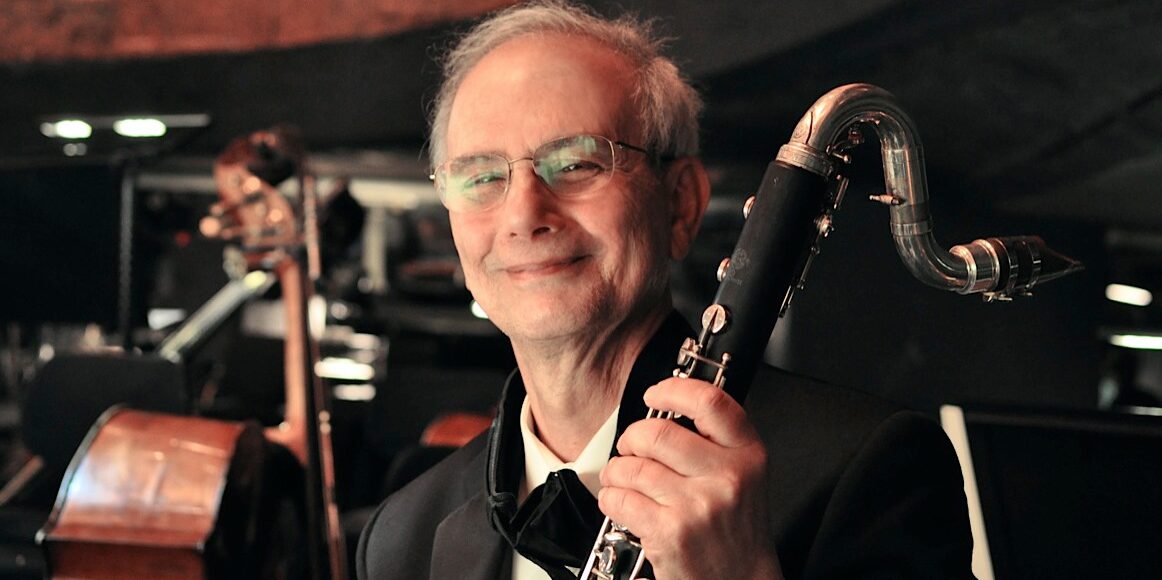
By Gene Kavadlo, former principal clarinetist of the Charlotte Symphony
As the orchestra was rehearsing, the loud sound of a vacuum cleaner in the lobby was becoming increasingly annoying. Finally, the conductor asked his assistant, a rather diminutive fellow, to see if he could do something about it. Jordan went to the lobby. Suddenly there was a THWAP! and the annoying sound stopped abruptly. Without missing a beat, Jim said "Oh no, now we're going to have to get Jordan out of the bag." Anyone who knew Jim knew that he was the sharpest wit in the room. My children, now in their 40's, always referred to him as "our Jim." Our Jim succumbed to a 17 year battle with cancer on August 11, 2020.
I first met Jim in our student days at Indiana University during the 1960's. After college Jim served four years in the military as a member of the US Marine Band and White House Orchestra, and I went on to become the Principal Clarinetist of the Charlotte Symphony in N.C. One day I got a call that started with "You probably don't remember me..." It was Jim, and of course I knew exactly who he was. He had taken an audition with the Charlotte Symphony and won the job - beginning a fabulous eight year relationship as colleagues in the same Orchestra. It was in the Charlotte Symphony that Jim started playing the bass clarinet. There had been an older gentleman playing, but his skills were declining. One day the instrument fell over as it was resting in its stand, and Jim declared that it had committed suicide.
When Jim won a job at the MET I had very mixed feelings. I didn't want to lose my dear colleague, but he certainly couldn't pass up a career move like that. Before leaving Charlotte Jim found out that one of his first assignments would be to play the basset horn obligato from Mozart's Clemenza di Tito. Jim had never played the basset horn, nor heard Clemenza di Tito. We listened to a recording in my living room (before YouTube days), and Jim burst out laughing. When I asked him what was so funny, he said "I'm so glad I get to play this at the MET before I play it someplace really important." Naturally, his performance several weeks later was superb. Thus began his 33 year tenure as Principal Bass Clarinetist with the Metropolitan Opera Orchestra. Jim's playing can be heard on numerous Grammy award winning Metropolitan Orchestra recordings, including Wagner's Ring Cycle on Deutsche Gramophone. He was also a member of the All-Star Orchestra made up of leading players from major American Orchestras. He served many summers in the Spoleto, Grand Teton, Bard, Napa Valley and Verbier festivals, and was an instructor at Julliard.
Former Principal Oboist of the MET, John Ferrillo, visited Jim a few days before he passed and played some beautiful oboe music for him. This is a story from John: "When Jim was stationed with the Marine Band in DC, he was dating an oboist. On a number of occasions he would make the 3 hour drive to Philly to bring her to her lesson with John deLancie, first oboist for the Philadelphia Orchestra. On one of those drives he needed to use the bathroom; when he asked permission, Mr. deLanci told him no.
"Years later, Mr. and Madame deLancie came to the MET. They were ardent opera fans. At the end of one of the performances, they met me at the gift shop. Before we parted company, he asked me who was playing the basset horn in Clemenza di Tito two broadcasts ago. I was delighted - 'funny you should mention him; that was my close friend, Jim Ognibene.' 'Well...let me tell you - that was some of the finest woodwind playing I have ever heard!' 'Why, Mr. deLancie, that's Jim coming through the doors right there.' Mr. deLancie insisted on taking Jim aside and spoke avidly to him for a number of minutes. For Jim it was one of the greatest accolades he'd ever received."
Later that night, I called Jim. Of course, I knew the line was coming. "I thought the time was right for me to ask if I could use his bathroom now."
A thank you to arts educators, from CSO Musicians
September 17, 2020This week we're celebrating Arts in Education Week, a national celebration recognizing the transformative power of the arts in education. As professional musicians, Principal Clarinetist Taylor Marino and horn player Andrew Fierova have been profoundly affected by their music education. We asked them to share their stories.
Taylor Marino, Principal Clarinetist:
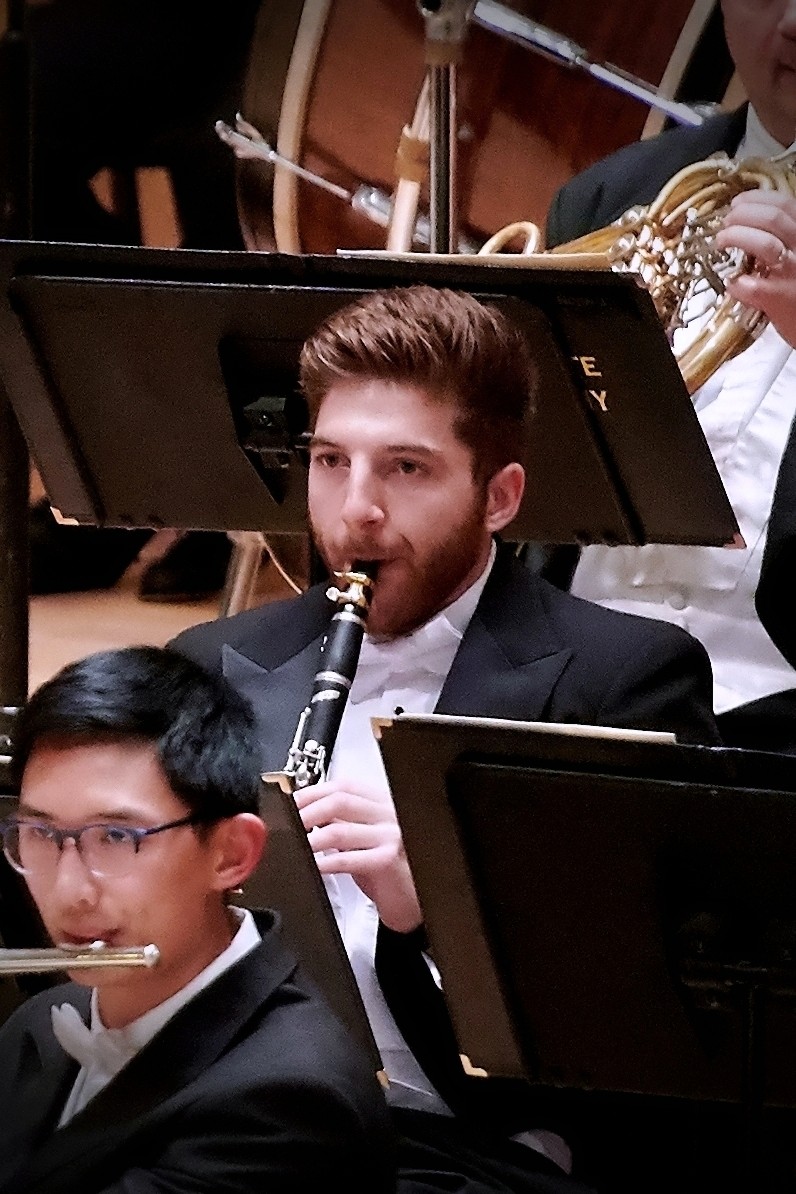 |
"Having grown up in Charlotte, I owe this city and its music educators a great deal of gratitude for supporting me and inspiring me to pursue a musical life, which ultimately led me back home to be a part of the Charlotte Symphony. My middle school band director at South Charlotte Middle School, Carl Ratliff, had a profound influence on me and taught me to pursue excellence, stay focused, and enjoy the beauty that music has to offer. I think of him often, and his great playing and musicianship as a saxophonist was inspiring as well. |
My private clarinet teachers, Jim Ruth and Michael Hough were also very important figures in my life. Jim Ruth started me on clarinet at the Music and Arts store and taught me great fundamental exercises that jump started my proficiency in music. Michael Hough, who is band director at Providence Day School and plays with the symphony often, really fine-tuned my playing and prepared me for the rigorous journey that a life in music would be.
I am beyond grateful to be back in my hometown sharing music with the community that has given me such wonderful musical support."
Andrew Fierova, Horn:
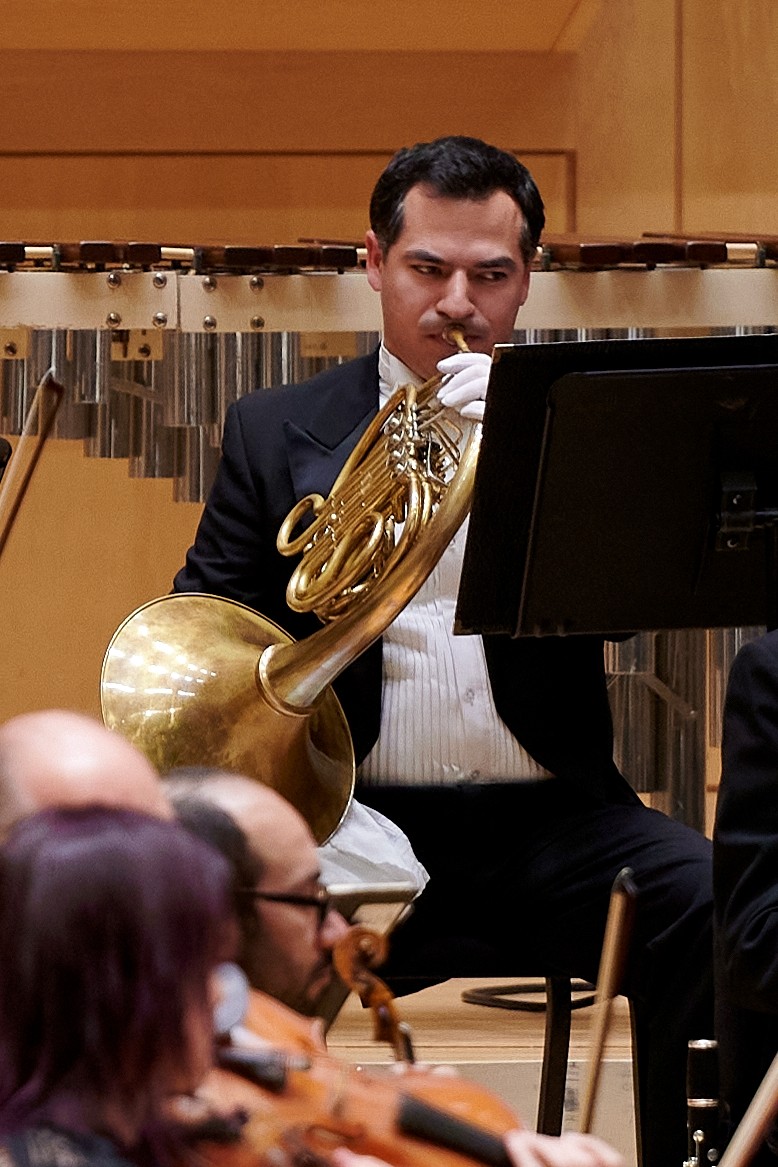 |
"Music was an important part of my public schooling from elementary through high school in South Carolina's School District 6. It led me to discover a love of performing that set me on my current career path. I loved singing with our elementary school chorus, especially when the songs had corresponding motions. My second elementary school provided the opportunity to join a recorder ensemble, where I learned my first wind instrument. When I got to middle school, I started learning the horn. Band in middle school provided a confidence booster, as I found something that I was truly good at. This helped me to succeed in the rest of school and also find my friend group. |
Dorman high school had a very well-supported music program and nice facilities. I was given the opportunity to perform in multiple ensembles, from orchestra to jazz band, as well as outside opportunities like honor bands. These continued opportunities solidified my desire to become a performer. Without the amazing band directors that helped me along the way, I would not be a member of the Charlotte Symphony today!" Read more
Meet Your CSO’s Newest Musicians
September 1, 2020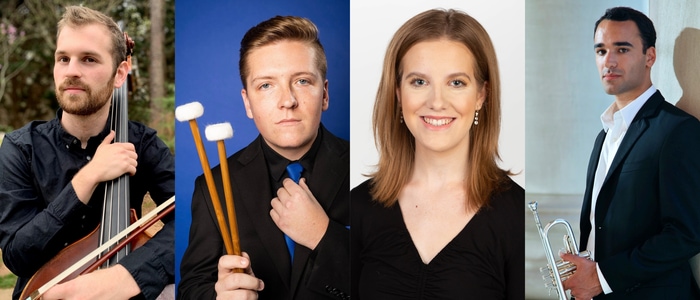
This season, you'll notice a few new faces in the orchestra! We caught up with Judson Baines, Jacob Lipham, Alaina Rea, and Gabriel Slesinger to welcome them to the CSO and learn a little more about who they are.
Judson Baines, Assistant Principal Double Bassist
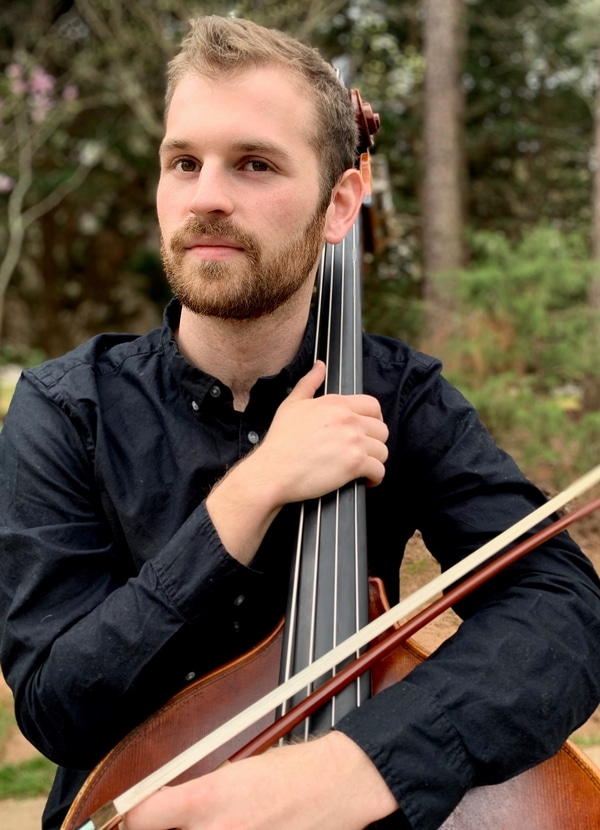 |
Where did you grow up? I was born in Wilmington, NC and grew up in the Raleigh area. I've spent a considerable amount of time in the mountains of western part of the state, as well as the coast, enjoying the merits of living in North Carolina throughout my life! What do you look forward to most about living and working in Charlotte? I think it's really awesome that I can be in my home state and have my family easily visit me and vice versa, so I'm really looking forward to that. |
What else should we know about you?
I would love the audience to know that I am genuinely so excited to join the CSO and play music with other people again after a long hiatus due to the virus!
Learn more about Judson.
Jacob Lipham, Principal Timpanist
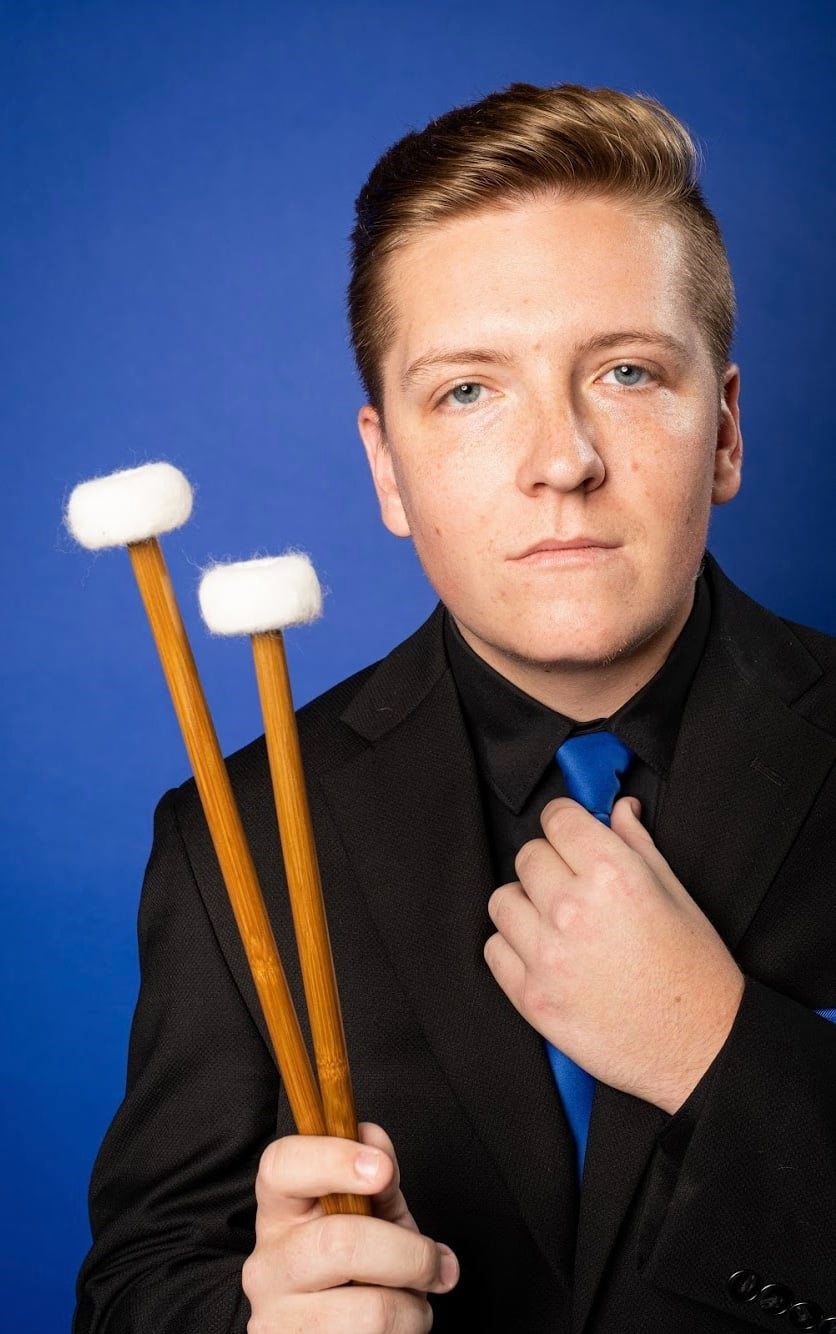 |
How were you introduced to music and the timpani? I began studying piano at a young age, around five, and really enjoyed it. When I got to middle school I decided to join the band. When it was time to pick my instrument for the band, the array of percussion instruments in the back of the room looked very enticing to play! Many of the kids wanted to play percussion, so my middle school band director prioritized students who had studied piano to join the percussion section. Thankfully I had studied piano, so I was able to begin playing percussion, and the rest is history! My decision to pursue orchestral timpani happened in my collegiate studies. I received my Bachelor's Degree in Percussion Performance at The Jacobs School of Music at Indiana University. |
While at Indiana University, I was introduced to a diverse range of percussion styles and fields of work. The experience I found the most excitement and joy through was playing timpani in the orchestra. The diverse sounds, colors, and roles the timpani can provide within an orchestra, in addition to the thrill of creating music beside colleagues, was more than enough to convince myself to narrow my pursuit to an orchestral career.
What do you look forward to most about living and working in Charlotte?
I moved to Charlotte recently, and I am very excited to explore and get to know the city more. The culture seems vibrant, diverse, and welcoming. I can't wait to explore the vast restaurant and brewery scene, and check out the local sport teams! I am so thrilled to be a new member of the Charlotte Symphony Orchestra, to begin making music with my new fantastic colleagues, and seeing you all from the stage hopefully soon!
Learn more about Jacob.
Alaina Rea, Assistant Principal Violist
 |
How were you first introduced to the viola? I started playing the violin at the age of 4 in the Suzuki method. During high school, my teacher suggested that I learn the viola. At first I reluctantly agreed but ended up loving it and decided to make the switch. What are you looking forward to about being part of the Charlotte Symphony? I am most looking forward to making music with talented colleagues and exploring different parts of the city. |
What do you do for fun when you're not practicing or performing?
Outside of music, I enjoy hiking, cooking, and spending time outside.
Learn more about Alaina.
Gabriel Slesinger, Third/Associate Principal Trumpet
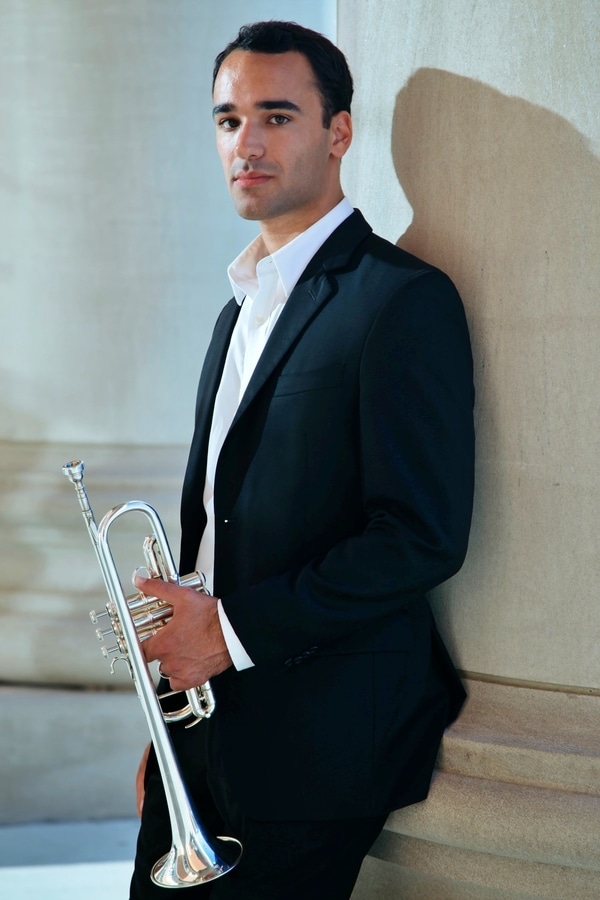 |
How were you introduced to music and the trumpet? My parents both value music and it was important to them that my siblings and I all learn instruments. My two older sisters played the piano and my older brother played the violin. My earliest musical memories are of hearing them practice every day, overhearing their lessons and recitals, and listening to the classical station on every car ride. As the youngest, I think I picked the trumpet because I wanted my instrument to be louder than theirs. My parents are fans of Louis Armstrong and Herb Alpert, so I had a little bit of awareness of these great trumpet players before starting. |
I really like the people in this orchestra. There is a very high level of playing here, but it's also like a family. The musicians here really stretch themselves and take risks in concerts. I love closing my eyes during a rest in a concert and pretending I'm an audience member, and I can't wait to be onstage again. The first concert back is going to be absolutely electric. I'm happy to live in a city where people value live music. The Charlotte Symphony has a wonderfully supportive audience.
Do you have any hidden talents?
I can name all the US presidents in less than 10 seconds.
Learn more about Gabriel. Read more
CSO Musicians Perform in Virtual Colorado Music Festival
August 20, 2020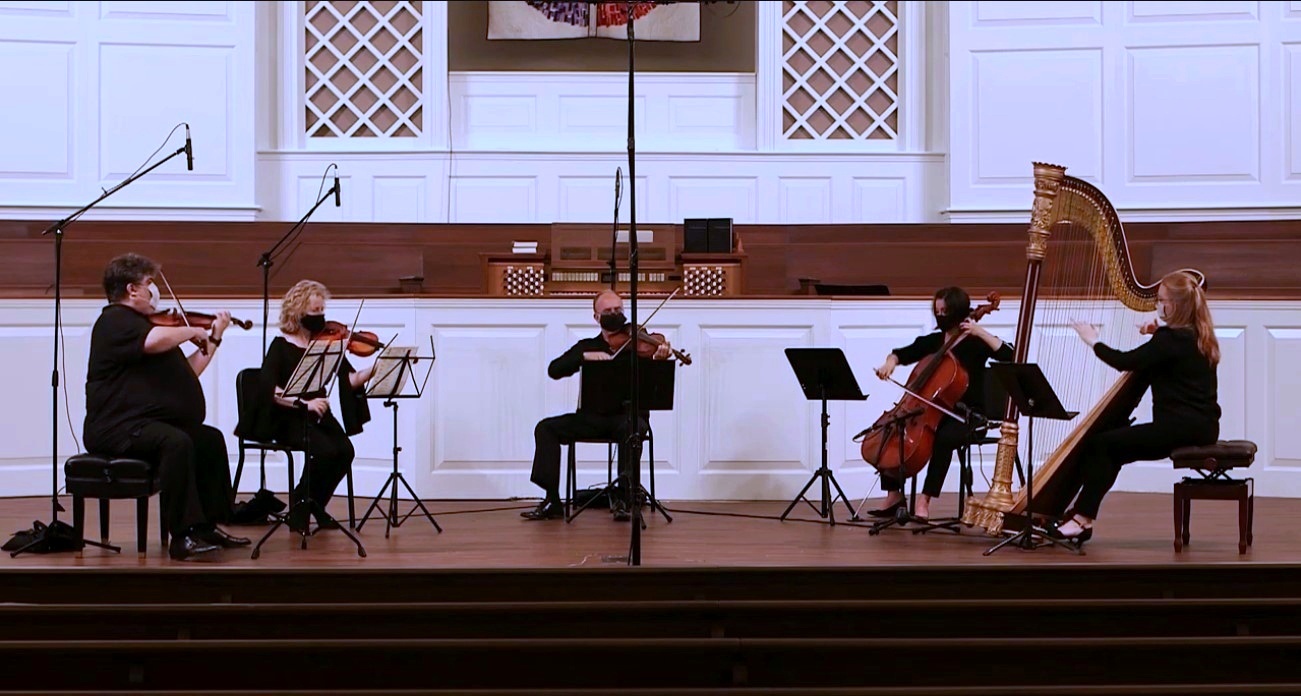
This summer, a number of the Charlotte Symphony's talented musicians participated in the 2020 virtual Colorado Music Festival.
Concertmaster Calin Lupanu was joined by Associate Concertmaster Joseph Meyer, Second Violinist Monica Boboc, Cellist Marlene Ballena, and Principal Harpist Andrea Mumm to perform Ravel's Introduction and Allegro and Dvořák's Terzetto in C Major, Op. 74 (I. Introduzione: Allegro ma non troppo & II. Larghetto).
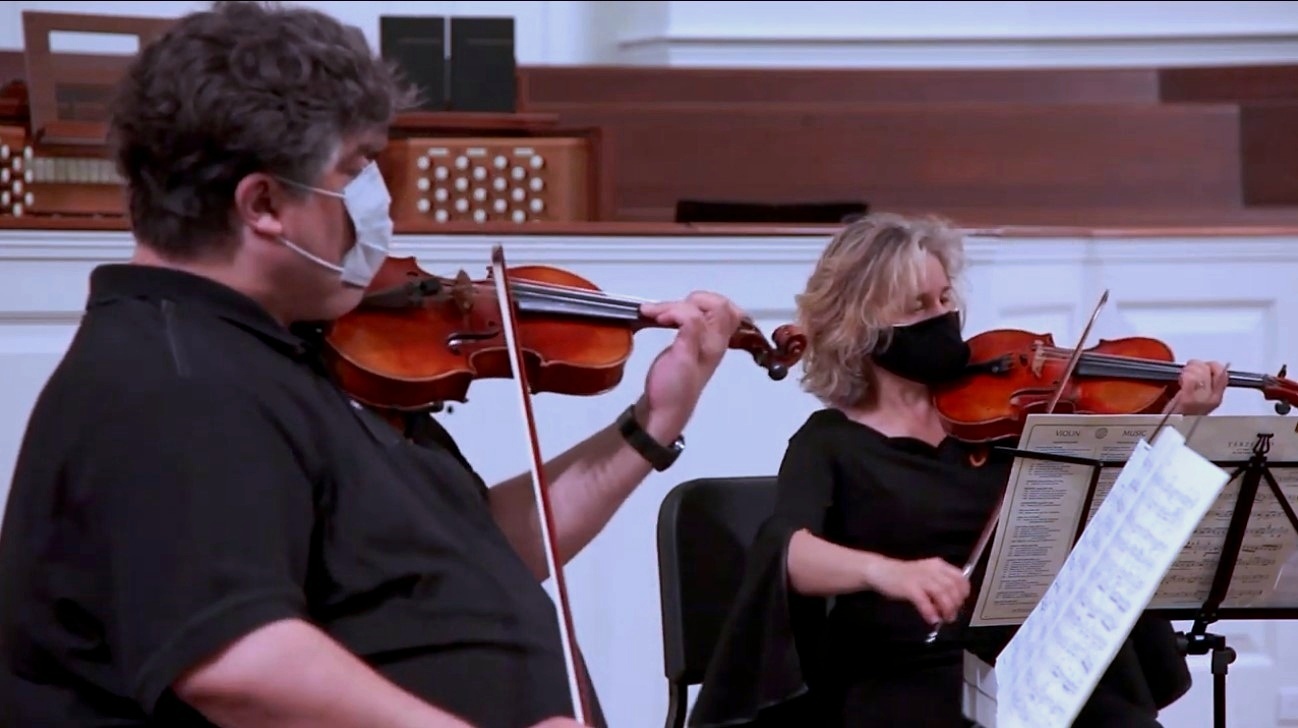 Read more
Read more
CSO Musicians Go Totally '80s!
January 21, 2020We asked CSO musicians to "turn back time"... and, boy, did they deliver! With its distinctive fashion, slang, and music, the 1980s was definitely the raddest decade in history. Take a blast to the past with these old-school cool photos!
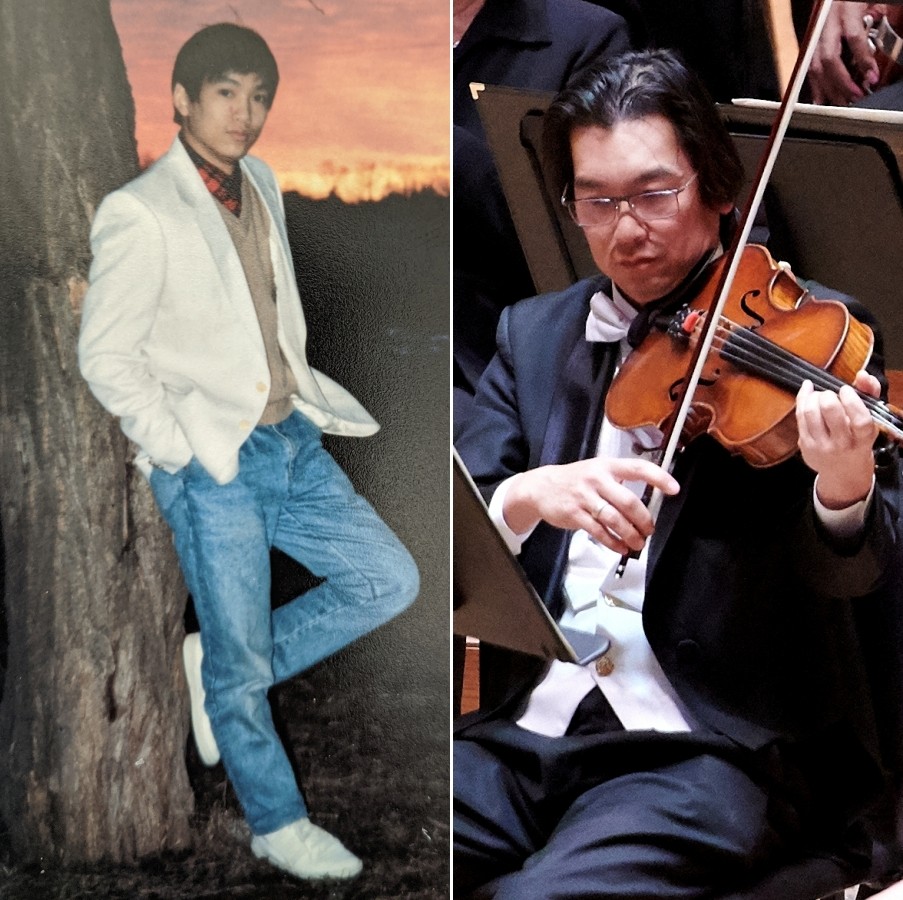
Violist Ning Zhao
Ning immigrated to the U.S. to further his music education at Kent State University in 1986. This photo was taken during his first year. With this white jacket and sneaker combo, Ning shows that he definitely knows as much about fashion as he does about music - like the back of his hand.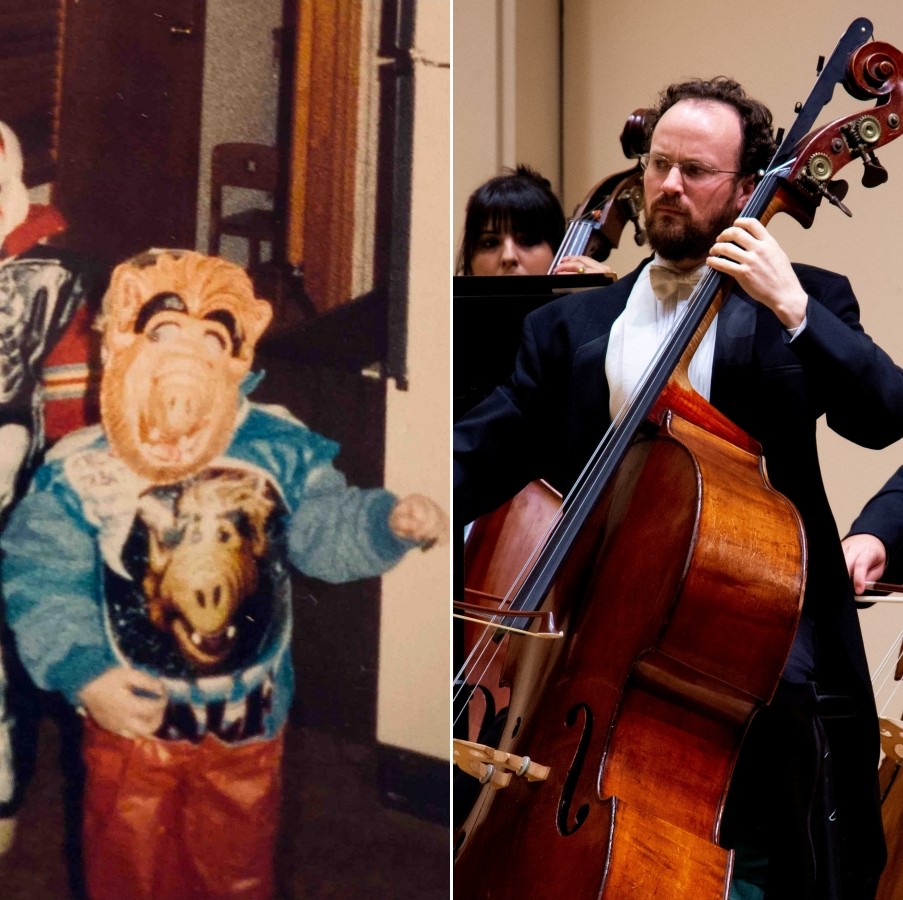
Acting Assistant Principal Double Bassist Jason McNeel
Jason may have been young in the '80s, but he definitely had his finger on the pop culture pulse. On Halloween of 1988, Jason was repping one of the most iconic characters of the decade: Alf. He definitely proved his love for the extraterrestrial by featuring him in his outfit not once, but twice.Evidently, I loved Alf! ~ Jason McNeel

Violist Nancy Marsh Levine
If there is one thing the '80s is known for, it's volume. This photo from Nancy's wedding in 1989 definitely exemplifies that trend. The amount of sleeve on her dress is beyond impressive. Modern-day bridal fashion really isn't what it used to be!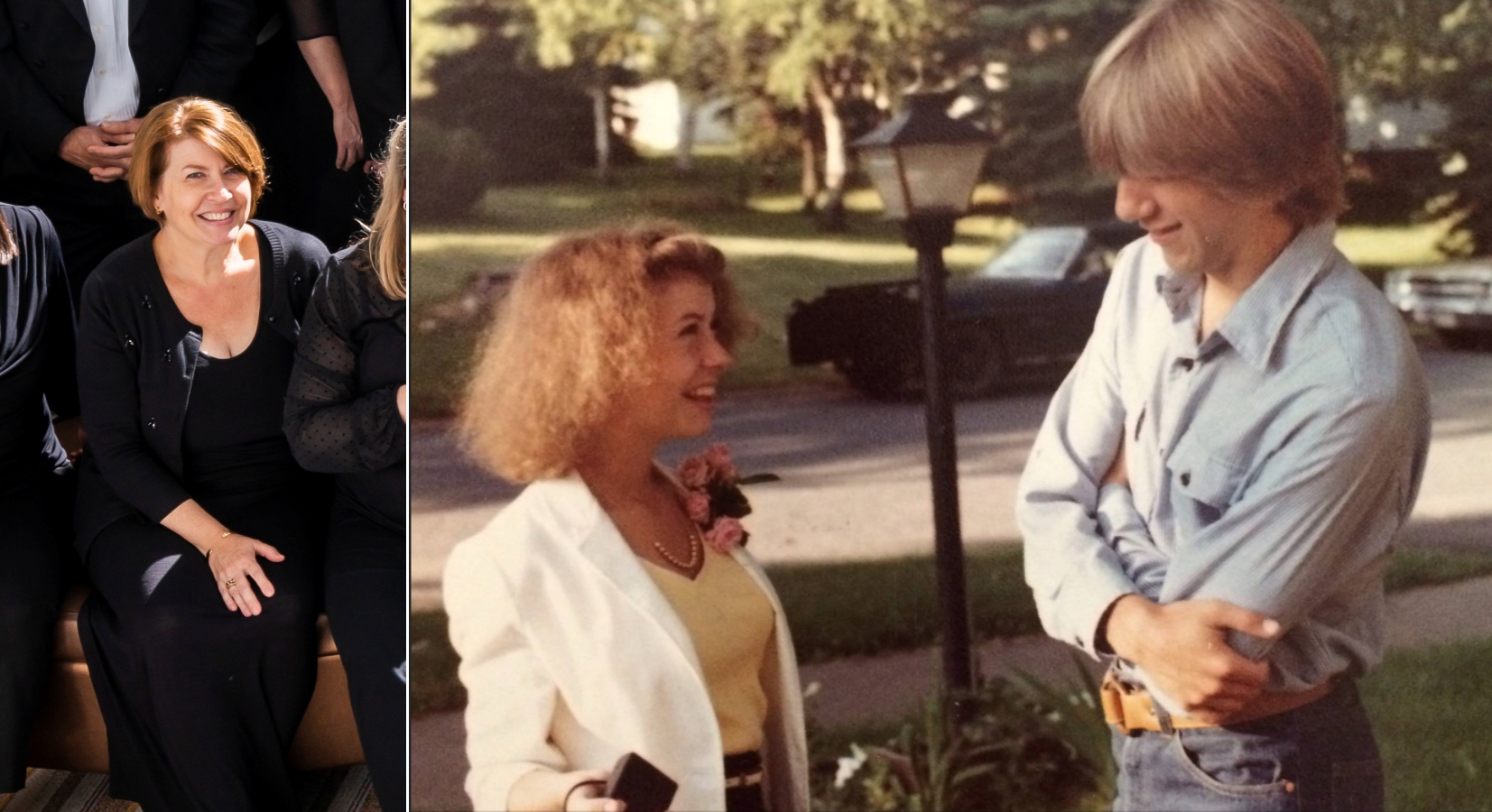
Violist Ellen Ferdon
As hard as it may be to believe, this is not a still from a John Hughes film. This photo was taken in 1982 of Ellen and Jeff Ferdon, just before their wedding. As impressive as the fashion and hair are in this photo, the only thing we can focus on is the adoring look they're sharing.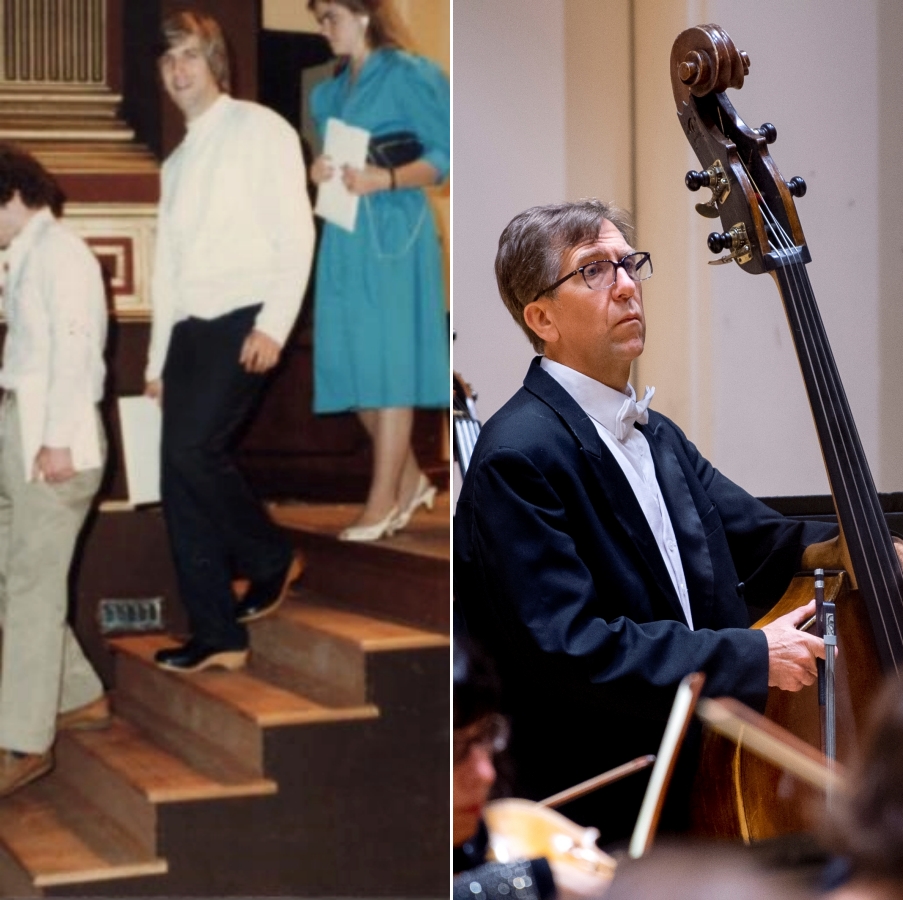
Double Bassist Jeffrey Ferdon
This photo from 1984 shows Jeff graduating from University of North Carolina School of the Arts. Jeff claims he "had zero interest in clothes at the time," but judging by that sleek white button-up shirt and voguish clogs, we don't believe him at all. Finding inspiration from MTV's hottest music videos, Jeff's hair evolution included both the infamous mullet and even a foot-long rat tail. We can only hope to see a revival of one of those looks on stage! Read moreFather and daughter share the stage at Stars, Stripes and Sousa
October 25, 2019Violinist Jenny Topilow has a special connection to our upcoming Stars, Stripes and Sousa concert on Nov. 15 & 16: her father is the guest conductor! Find out in our interview below what it's like for Jenny to see her dad on the podium, and how Carl Topilow creates his patriotic clarinet for this concert.
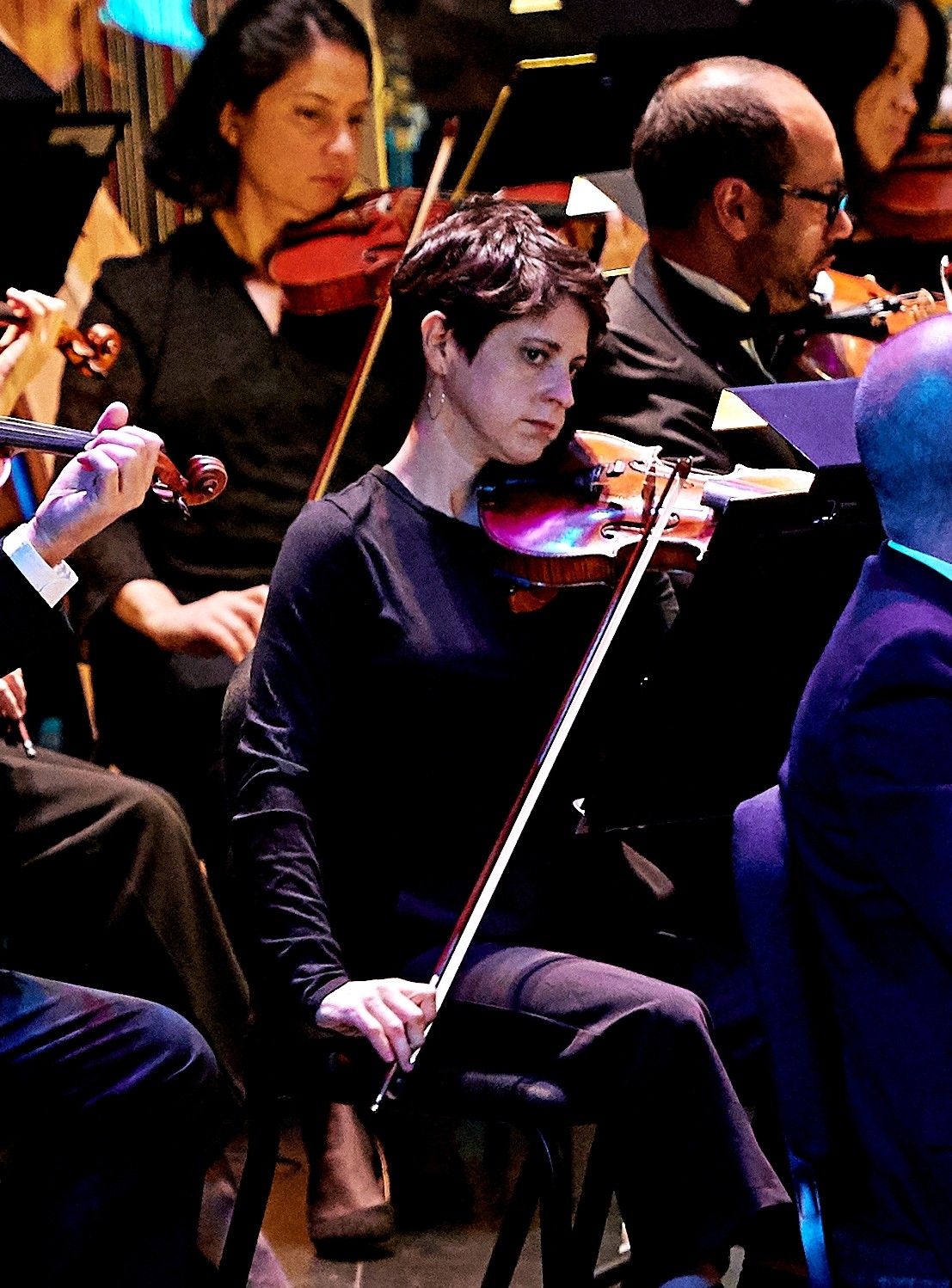 |
Jenny, what's it like to have your father on the podium as your conductor? Have you worked together like this before? JT: My Dad was my primary conductor when I was 18-22 years old. During that time, I wouldn't say we "worked" together as much as I was a student learning from him as a teacher, which he's great at. He did give me a B in conducting class [at the Cleveland Institute of Music], though (he was probably being generous!). Since becoming a member of the Charlotte Symphony, I have worked with my Dad many times. Often it's just us playing duets (with him on the clarinet), but also in [an orchestral setting] a few times, too. |
I'm very proud of my dad and his amazing career, and it is special when he is on the podium, but he's very cognizant about not treating me any differently when we are in a professional setting. Maybe he'll point out that I'm his kid and he's excited to have me in the band, but then it's down to business. As he says "I've worked with hundreds of violinists, and you're definitely one of them."
Carl and Jenny, what inspired you to choose a career in music?
CT: My love of music and my desire to pass this passion on to other people as teacher and performer was my inspiration to make this a full-time profession.
JT: I started violin at age three after seeing Itzhak Perlman on Sesame Street (a surprisingly common story!). It's been simply amazing to share the stage with him recently.
My dad being a conductor and my mom being a ballet dancer, they basically had the 16th sized violin waiting for me in the closet. I was pretty talented and practiced pretty diligently, but as a professional musician and a teacher at a conservatory, my dad knows just how hard it is to have a successful career in music, and never pushed me to go into it. He didn't exactly stand in my way, but he made sure I knew how competitive it is.
When I won my job with the CSO, he was the first person I called and he was the one person who cried happy tears with me, because he really understands how rare it is to win a job and how hard musicians work to prepare for auditions.
Is anyone else in your family musical?
CT: My brother, Arthur, is an excellent jazz pianist. He's also a much-respected hematologist/oncologist. My younger daughter Emily enjoyed performing as violinist with her college orchestra for 4 years and is now playing with a community orchestra in Cleveland. I recently appeared as guest conductor with that orchestra, and it was very rewarding to perform together!
| JT: Like my dad said, my Uncle is a fantastic jazz pianist and my little sister plays the violin. My mom was a ballet dancer with Joffrey and the Metropolitan Opera in NYC before I was born and is a great lover of classical music (especially opera), and my stepmom, Shirley, is a professional tap dancer and also started the Cleveland Pops. Carl, this kind of patriotic concert is one of your specialties. How did that come to be? CT: These concerts do so much to instill a sense of pride and privilege to be living in the U.S. |
 |
We hear you have a very patriotic clarinet... What's the story behind that?
CT: I have red, white, blue, and green clarinets, and can assemble parts of each to come up with multicolored clarinets. I always play the piccolo obbligato to the Stars and Stripes along with the orchestra piccolo players on a red, white, and blue clarinet. Read more
Sneak peek: 'Off the Rails' with Kari Giles and Kirsten Swanson
October 10, 2019We're trying something a little different this season. On October 15, a quartet of CSO musicians are going "Off the Rails" with a performance of contemporary music at Snug Harbor in Plaza Midwood. We caught up with two members of the quartet, Assistant Concertmaster Kari Giles and Acting Assistant Principal violist Kirsten Swanson, to get a sneak peek of the program.
| Have you ever played a concert like CSO Off the Rails before? Kari Giles: I've never been fortunate to play a concert quite like Off the Rails! I have always been passionate about new music and putting together creative programs. It is so fun to search and discover new composers, bring their works to life, and then share them with an audience for the first time. [So] having the freedom to create a program and literally being told to "get wild" and "out there" was thrilling. I knew immediately that I wanted to partner with Jenny Topilow and Kirsten Swanson. On top of being amazing musicians, they are dear friends, and we have a long history of playing chamber music together. Jeremy Lamb has also been involved in many local new music collaborations and is a composer himself, so I knew he would be perfect addition. |
Assistant Concertmaster Kari Giles
|
Kirsten Swanson: I have been very fortunate to have spent a lot of my career playing contemporary music, and I absolutely love the creativity of 20th and 21st Century string quartet writing. I did a similarly programmed concert last year, but what I especially love about these pieces is that the composers play around with the Western musical tradition of a steady, toe-tappable, rhythm and sends the listener's inward pulse "off the rails."
What kind of music is on the program? How was it selected?
KG: The concert will open with John Adams' "John's Book of Alleged Dances." When it was suggested by my husband Mark Lewis, who is also a composer, I instantly loved it and knew we had to program it. Next on the program is "Carrot Revolution" by young and upcoming composer Gabriella Smith. The words "Rock Out" are literally marked into all of our parts in the opening, and the piece is filled with fiddle, blues, and rock riffs. Listen closely to hear her homage to The Who! A friend recommended I check out our third featured composer, Pamela Z. As an artist and composer, Pamela Z creates eclectic works using voice, live electronic processing and sampled sound. I don't want to give too much away, so I will just say that this work is dreamy and super cool. We have a few more surprises as well, so I hope everyone will come out ready to hear some new music they've never heard before!
 Acting Assistant Principal violist Kirsten Swanson
|
KS: The works on the program toy with our sense of pulse and rhythm, one of the most essential elements of music. In the Adams work, he has the quartet playing with a pre-recorded track played on a player piano. The track is sort of our metronome, except it's not quite steady (or is it?), which is a trip for us as players and for the audience! Adams is making such fun of the idea of what makes a dance a dance and how we each frame our sense of pulse. I'll be so curious to hear what the audience feels throughout these.
Which do you think is the coolest or most fun piece on the program? KG: The part of the program that is most personal to me is a movement of the Adams work called "Judah to Ocean." |
KS: Carrot Revolution is totally the most fun! Anything that says "Rock Out" is going to be my favorite piece!
What kind of music do you listen to for fun?
KG: Currently my go-to musical companions are Prince, Rhianna, Tori Amos, and The Cure. I am also really going through a traditional Irish phase, and Dervish is just magical. My all-time favorite band, though, is Jump Little Children, who I went to school with when I was at NCSA.
KS: Oh man. My playlist is embarrassing. Last week I listened to Lizzo (butchered the lyrics); Raffi because he has a beautiful voice and the lyrics still get me as an adult (I mean! Robin in the rain/what a saucy fellow); Anderson .Paak because he's just amazing; and the oldies...because my parents did, and it's the music I listened to growing up.
What do you think people need to know about the concert before they show up?
KG: Just put on your coolest (or uncoolest) outfit, grab a drink at the bar, and have fun!
Dr. Samuel C. Davis - Always About the Music
July 7, 2019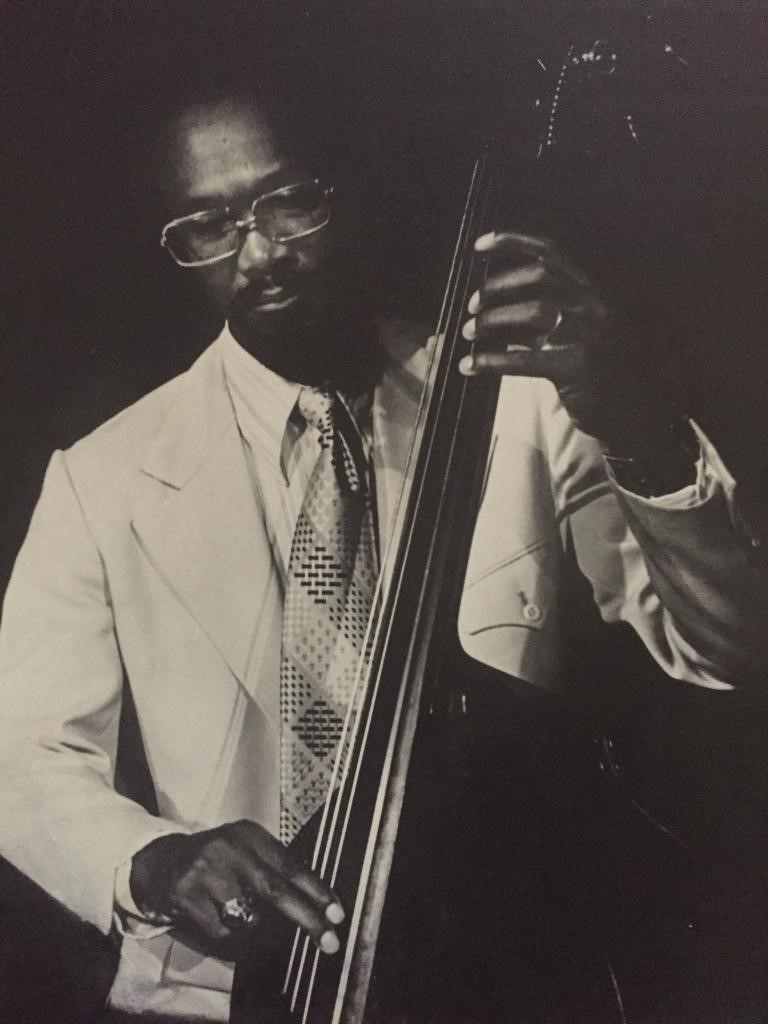
It is with a heavy heart that we share former Charlotte Symphony cellist Dr. Samuel Craig Davis passed away on July 2, 2019. Dr. Davis was a musician, CMS educator, and trailblazer as one of the first African Americans to integrate into the Symphony in 1963. Current Charlotte Symphony musicians gathered at his funeral service on July 6 at First Baptist Church-West and played Bach's Air as he was laid to rest.
Dr. Davis's grandson, Derrick Eure, shares the main details of his life's work and how his perseverance made an impact on the symphony, and the greater Charlotte community.
Dr. Samuel Craig Davis's, life was highly dedicated to music education. As an African American Orchestra teacher in the Charlotte Mecklenburg Schools System in the early 1960's, Dr. Davis was already a trail blazer for introducing classical music into the world of a segregated Charlotte at the junior high and high school level. It wasn't until 1963, on his third attempt auditioning for the symphony, that himself and lifelong friend, Leroy Sellers (also a Violin teacher with CMS) were selected to be apart of the symphony under the direction of Richard Cormier. Following Cormier as Director, Jacques Browman would direct the two friends for the next 13 years.
During that time, Dr. Davis went on to foster a plethora of friendships with symphony friends, further crossing the racial divide with the common love for the music. Quartets were formed, and so many recitals took place as the symphony played in the home my grandfather masterfully built. In fact, Aurdrey Browman, wife of the director Jacques Bowman, even gave a piano recital, with notable members of the symphony performing, time and time again as he opened the doors to his home.Let it never be about your skin, or where you're from or where you studied. Instead, let it always be about the music.
Names of famous opera singers like Dorothy Manor (NYC), & Gloria Davey even shared in the beautiful parties my grandfather put on, because he truly understood what magic could come when people no longer saw difference, but instead - simply, the music. That, is what I believe Dr. Samuel C. Davis's life work has shown us us all that we sometimes forget even still today. Let it never be about your skin, or where you're from or where you studied. Instead, let it always be about the music.
Our thoughts and prayers are with Dr. Davis's loved ones during this difficult time.
Read more
Welcome New Musician: Samuel Sparrow
October 2, 2017| A North Carolina native, Samuel Sparrow joined the Charlotte Symphony as Section and E-flat Clarinet in September 2017. Mr. Sparrow has performed with the New York Philharmonic, New World Symphony, and Verbier Festival Orchestra in Switzerland. As a soloist, he has appeared with the Raleigh Symphony, Garner Sinfonia, and Triangle Youth Philharmonic. Other performance highlights include a featured appearance with Sting at the Main Assembly Hall of the United Nations and the West Coast premiere of Matthew Aucoin's chamber opera, Second Nature. The recipient of the Leon Russianoff Memorial Scholarship, Mr. Sparrow earned his bachelor's in music performance from Manhattan School of Music. His primary teachers include Mark Nuccio, Anthony McGill, and Pascual Martinez. During his summers, he has attended the Brevard Music Center's Orchestral Institute and the Music Academy of the West in California. In addition to performing, Mr. Sparrow enjoys teaching and maintains a small private studio. | 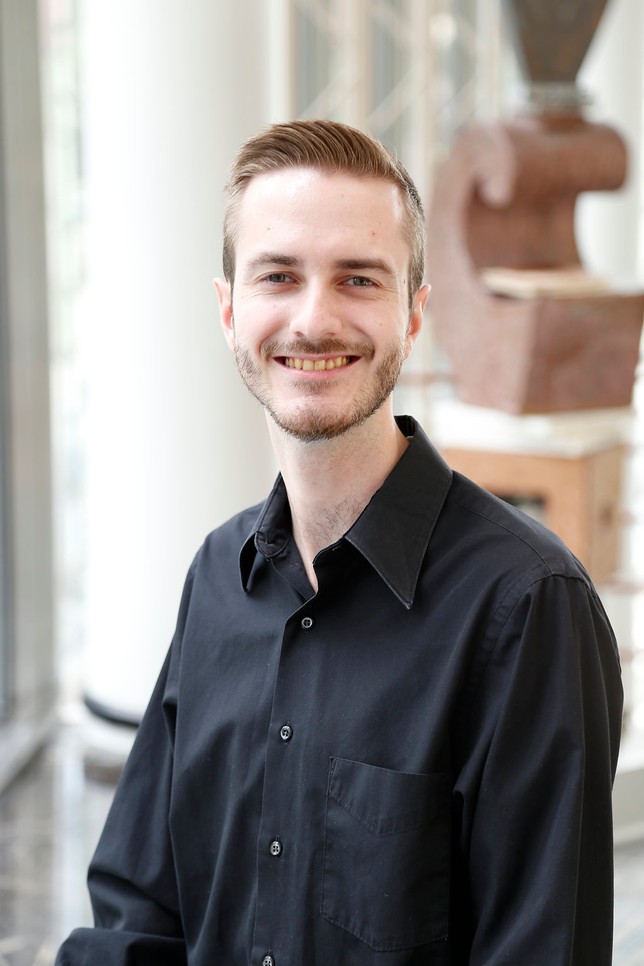 |
Hometown: Durham, North Carolina
Why did you select your instrument?
My parents said the drums were too loud, and my band had too many flutes already, so the clarinet seemed like the next coolest instrument.
What would most surprise people about you?
I love a good adrenaline rush! I'm a big rollercoaster fan, and recently rode the world's largest free-fall swing.
If you could meet one composer, who would it be and what would you ask him/her? Shostakovich. How did you find the courage to keep composing after falling out of favor with the Soviet government?
What's your funniest/most compelling on-stage moment?
I once fell off the stage during a performance. We were playing Haydn's Farewell Symphony. Every musician's part ends at a different time, so to emphasize this, we played in the dark with stand lights and walked off the stage quietly after our part ended. As I turned off my light and starting walking off stage, there was one more stair on my riser than I realized. My instrument was okay, but my pride ... not so much.
Any pre-performance rituals?
A light meal and breathing exercises to relax
Other than your instrument, what would we find in your instrument case?
Pencils, reeds, earplugs, sheet music ...the occasional grocery list
What do you love most about being a professional musician?
Hearing from audience members about how the music positively impacts their life. Music-making is very personally rewarding, but reaching someone else is what really makes this job meaningful. Read more
| « Newer Posts | Older Posts » |
Latest Posts
- MERGE: Symphonic x Electronic
- Heart of the Home Tour Returns
- Composer Spotlight: Nia Imani Franklin
- More Famous Than Mozart: Joseph Bologne, Chevalier de Saint-Georges
- Art in Motion: Rosalia Torres-Weiner Chosen to Design CSO Roadshow
- Announcing Kwamé Ryan as the Charlotte Symphony’s Next Music Director
- Photos: Charlotte Symphony Annual Gala and Concert
- Five Must-See Concerts of the 2023-24 Season
- 5 Pro Tips for the Best Summer Pops Experience
- A Preschool Performance Three Years in the Making


